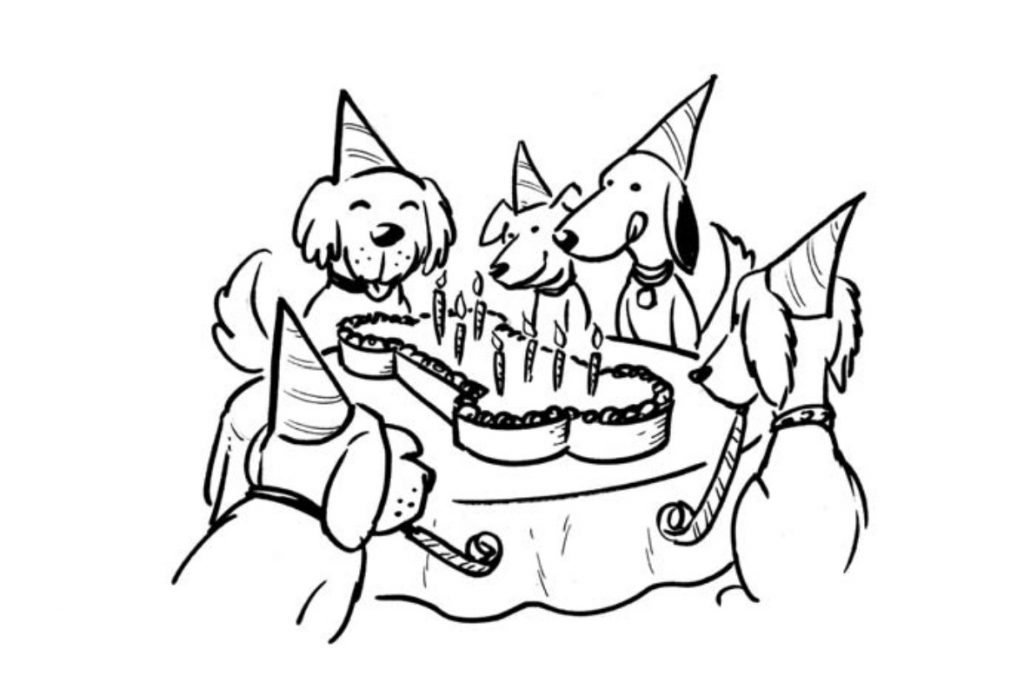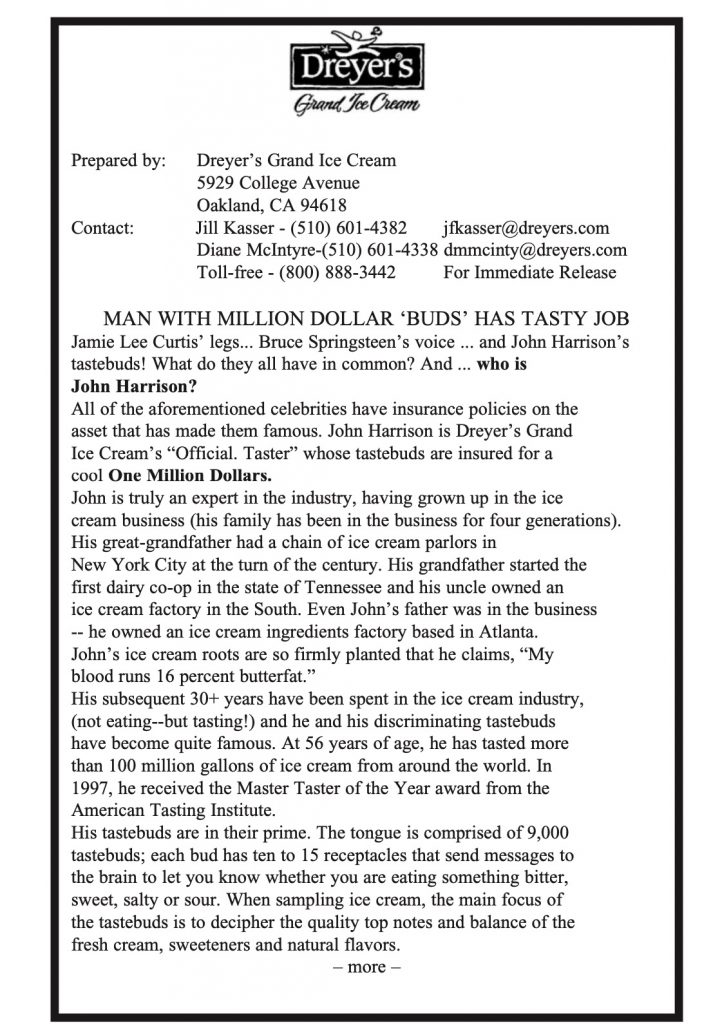MAKE IT VISUAL
It’s called “television,” but many of the stories people try to pitch us are more “tell” than “vision.” What I’m trying to say is that great TV stories are stories for the eyes. So as you formulate a story you’d like the news to cover, you should be asking yourself the same question we reporters ask, “What are the visuals?”
BARKING UP THE RIGHT TREE
Michelle Lamont of Nixon’s Top Dog Gourmet Bakery is a genius at free publicity. I met her several years ago on a story and have done at least half a dozen reports with her since.
The first time I did a story about Michelle, she called me and said part of her business includes baking birthday cakes for canines. Cool story, right? Wait, it gets even better. Michelle, knowing that great pictures make for great television, arranged for us to get video of a dog birthday party. She lines up everything. She finds a client who’s hosting a party for her dog, then takes care of all the details. She makes sure the place is decorated, the dogs have birthday hats and all the guests are hungry. Instant story, just add reporter.
It turned out to be a very memorable piece. Michelle walks in on camera with the cake, the dogs come running, and with the photographer looking on, devour the cake as fast as she can slice it. Another story so good it didn’t just run locally, it aired globally.
Michelle may bake dog biscuits for a living, but she’d also make a great reporter. She thinks visually. And that’s why she has every journalist in town hounding her for stories.
THE COOLEST SCOOP A REPORTER EVER HAD
Hundreds of companies make ice cream. But Dreyer’s takes the cake when it comes to thinking visually. John Harrison is the “Official Taster” for the company. He’s the head of quality control for Dreyer’s and helps decide which new flavors to launch. In fact, his claim to fame is being the guy who “invented” Cookies ’N Cream.
But he hardly has time to come up with any new concoctions these days. He spends more time on the road than many candidates do in an election year. On most days, you’ll find him in the freezer section of a grocery store posing for cameras and talking to reporters. All ice cream manufacturers have people in quality control, but Dreyer’s figured out a long time ago that sending John on tour would bring in gazillions of gallons of publicity. They were right. The press releases bill him as “The Man With the ‘Coolest Job’ in the Country.” Reporters just eat up this kind of stuff. The visuals are awesome.
John walks around in a white lab coat with a golden tasting spoon in his pocket. He makes eating ice cream look downright scientific. With cameras watching his every move, he carefully savors each spoonful, like a wine expert.
And John’s story gets even more delicious. Dreyer’s has insured his taste buds for one million dollars. Now that’s a figure reporters can sink their teeth into. And I assure you Dreyer’s has covered the premiums many times over with all the free publicity they’ve received. He’s the man with the “million-dollar mouth.” But his story is truly a feast for the eyes.
As you’re formulating your story idea, do what Dreyer’s has done. Give reporters a story so visually interesting they can’t wait to get the scoop.
A WORD ABOUT THE PRINTED WORD
Even if you’re only trying to get a story in the newspaper, you should be thinking visually. Give the reporter something vivid to describe in the article. And if the visuals are really good, maybe you’ll get a photo alongside that story. Who knows? You may even end up on the front page. Newspapers know a great picture can sell a lot of copies.
Longtime columnist John Schneider points out that many papers, like his Lansing State Journal, lay out their cover around the pictures. It’s called a patch. “If your event can’t fill a patch, it makes it a lot harder to justify putting it on the front page,” says Schneider.
Think about it. What front pages do we remember and why? We remember little JFK Jr. saluting his father. We remember the sailor kissing the pretty girl he’d never met in Times Square at the end of World War II. We remember the picture of the Oklahoma City firefighter holding one of the child victims in that horrible bombing. And we remember the rescue workers raising the flag from the rubble of the World Trade Center. Whether it’s television or newspaper, the eyes have it.
A FACE FOR RADIO?
Even on radio, visuals are important. Sure you can show up and talk to the host. It happens every day. But if you have something visual you can bring to the studio, it may help the host get more excited about your segment. And the folks behind the microphones are very talented at describing what they are seeing. So bring props if you have them.
And if the radio station is doing a live remote at your event, visuals become even more important. You want something for them to see and talk about when the radio reporter or host arrives.
Dallas radio host Darrell Ankarlo says the guests who bring things to spice up their segments are the real talk show pros. “I did a segment on self defense and the expert brought in mace, stun guns, and other props for demonstration purposes,” Darrell says. “That’s a ten in my book, and that’s a guest who gets invited back!”
NEWS YOU CAN USE
- Reporters tell stories with pictures. If pictures aren’t there, chances are reporters won’t be either.
- Even the most nonvisual story can be made visual if you’re creative. Dog biscuits? Boring. A dog birthday party? Now you’re barking up the right tree!
- A picture truly is worth a thousand words. And if your pictures are good enough, they’ll end up on the front page next to a thousand word article.
- Don’t forget visuals for the folks in radio. Your segment will always be better if the host has something to describe for the listener.


